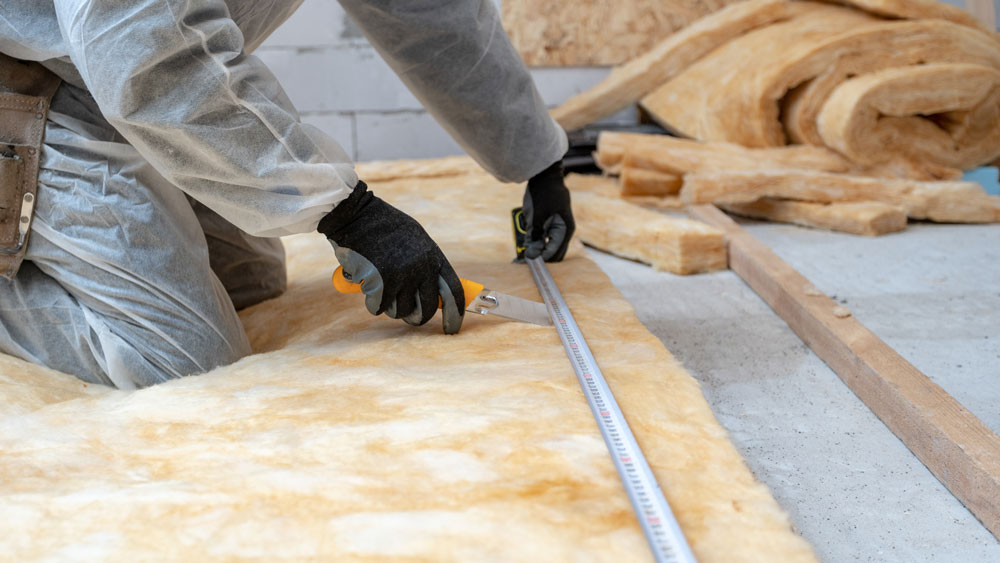What Is The Best Loft Insulation?
 CONTENTS
CONTENTS
Choosing the right loft insulation for your property can transform its energy efficiency and make it more comfortable. With so many to choose from and each material having its own pros and cons, it can be difficult to know which one is right for you.
Here at ICE Thermal, we offer our loft insulation installation services nationwide. Our engineers have over a decade's worth of experiencing installing insulation in domestic and commercial properties, and have access to a range of high quality insulation materials.
Keep reading to learn about the different kinds of insulation and which is the best insulation for your loft.
Blanket insulation
A popular choice for keeping homes and buildings warm is blanket insulation which utilises materials such as fibreglass, mineral wool, or organic fibres in either rolls or sheets. It is a highly adaptable solution that is ideal for both introducing into new builds and updating older ones.
Advantages
The main advantage of blanket insulation lies in its ease of installation. Installers can easily cut it to fit various spaces without special tools or equipment. It is relatively inexpensive compared to other types of insulation, too. This insulation's adaptability makes it perfect for application across multiple sections of a structure, from the walls to the floors and even the ceilings.
Another benefit is its effectiveness in reducing heat transfer. By trapping air within its fibres, blanket insulation slows down the movement of heat into or out of a property. This helps maintain consistent indoor temperatures throughout the year while lowering energy costs.
Disadvantages
If not properly installed with complete coverage and no gaps or compression, its effectiveness can be significantly reduced. Certain types, like fibreglass, can be dangerous, too. Fibreglass emits small particles that can irritate skin and respiratory systems during installation.
In addition to these issues, there is also potential for moisture absorption which could lead to mould growth if not addressed promptly. This is particularly problematic for rooms prone to water intrusion problems, such as basements and attics, which experience frequent leaks or heavy condensation periods.
Properties it is best suited to
- New construction projects: With open wall cavities, accessible ceiling joists, and easy-to-access locations, blanket insulation makes an ideal choice for those starting from scratch. Installation is quick and efficient, maximising thermal efficiency by the completion of the building phase.
- Properties that need to upgrade their energy efficiency: Due to its cost-effective nature, simple method, and adaptability to a range of different applications, it is highly recommended for anyone looking to improve the performance of their current home or business premises with minimal disruption to occupants or operations.
Loose-fill insulation
Loose-fill insulation is a type of building insulation that consists of small particles which can be poured or blown into place. It is ideal for adding insulation to existing structures, especially in areas with irregular shapes or where other forms of insulation are difficult to install. There are two types of loose-fill insulation: cellulose and fibreglass.
Advantages
It provides excellent coverage, particularly in nooks and crannies that might otherwise be left exposed by more rigid forms of insulation. It is easy to install and is often chosen for retrofitting older buildings without disturbing their structure too much.
Disadvantages
If not properly installed, loose-fill insulation can settle over time, leading to decreased effectiveness. Additionally, certain types may absorb moisture which could lead to mould issues if the area is not well-ventilated.
Properties it is best suited to
- Older properties: This form of insulation shines in scenarios requiring quick application without extensive modifications to the property. Older homes benefit greatly from this method as it allows homeowners to enhance energy efficiency without invasive remodelling work.
- Apartments or commercial buildings undergoing renovation: Its installation causes minimal disruption compared with other methods that might require tearing down walls or ceilings.
Sheet insulation
Composed mainly from materials like polystyrene, polyisocyanurate (PIR), and phenolic foam, sheet insulation offers excellent thermal resistance. Thanks to its solid structure, it seamlessly integrates not just amidst the bones of walls and floors but atop prior layers, too.
To properly fit the insulation, one must first take precise measurements of the space and then trim the panels accordingly. This precision ensures minimal gaps through which heat could escape.
Advantages
The primary advantage of sheet insulation lies in its high R-value per inch which makes it highly effective even with thinner layers. Additionally, some types are faced with reflective materials that further improve thermal performance by reflecting radiant heat back into the room during winter months while keeping interiors cool during summer.
Disadvantages
The initial cost may be higher than other options due to both material costs and the complex installation requirements. Furthermore, improper sealing around edges and joints between sheets can result in reduced effectiveness over time due to air infiltration or moisture penetration.
Properties it is best suited to
- Properties with spatial constraints: This is best for tight spaces where maximising usable square footage remains a priority, such as small urban properties.
- Heritage properties: Sheet insulation preserves architectural integrity without restricting invasive structural alterations.
Blown-fibre insulation
Blown-fibre insulation is a versatile and effective option for insulating lofts, attics, and other hard-to-reach spaces. This method involves blowing fibrous materials, such as cellulose, mineral wool, or fibreglass into cavities through hoses. The process not only ensures complete coverage but also seals gaps effectively.
This type of insulation provides excellent thermal performance because it fills in all nooks and crannies, leaving no room for air movement. Moreover, certain types of blown-in material can offer additional benefits like fire resistance and soundproofing properties.
Advantages
This type of insulation easily fills irregular shapes and tight spaces ensuring thorough coverage. It also improves energy efficiency by reducing heating costs due to its superior seal. Some kinds are even made from recycled materials, making it an eco-friendly choice.
Disadvantages
Blown-fibre can settle over time if not properly installed which can lead to reduced effectiveness. As specialised equipment is required, only professionals can install this insulation so it is more expensive than other types that may just need DIY installation.
Properties it is best suited to
- Homes lacking proper cavity walls: Invasive procedures are not needed so installation is quick and simple. Similarly, those seeking minimal disruption during upgrades find blow-in options appealing because installations typically take less than a day.
Contact us today
Our engineers have access to a range of insulation solutions blanket insulation, loose-fill insulation, insulation boards, and blown-fibre insulation so they can pinpoint the right kind for your unique needs. You can learn more about how loft insulation works in this blog.
Get in touch with our team on 020 3376 4802 or email [email protected] to find out more about our loft insulation installation services.

Speak with me today,
I’m here to help
By asking you a few questions either via phone or email I can immediately provide a realistic estimation of the cost.

Why choose us?
- Cater to a wide variety of cleaning situations
- Nationwide coverage, available 24/7
- Cater to commercial and domestic clients
- Free survey provided prior to quotation
- Emergency response team
- Offer a bespoke service designed to suit all your needs
- All technicians hold professional health and safety qualifications, including BICSc, IOSH, Dewpoint Professional & Safe Contractor
We’re fully accredited
We place best practise, professional expertise and health and safety at the core of our business. We’re fully compliant with all legal obligations. You can view a list of our accreditations below, or visit our Health & Safety page for more information.











-RGB-small.1707319151.jpg)




















